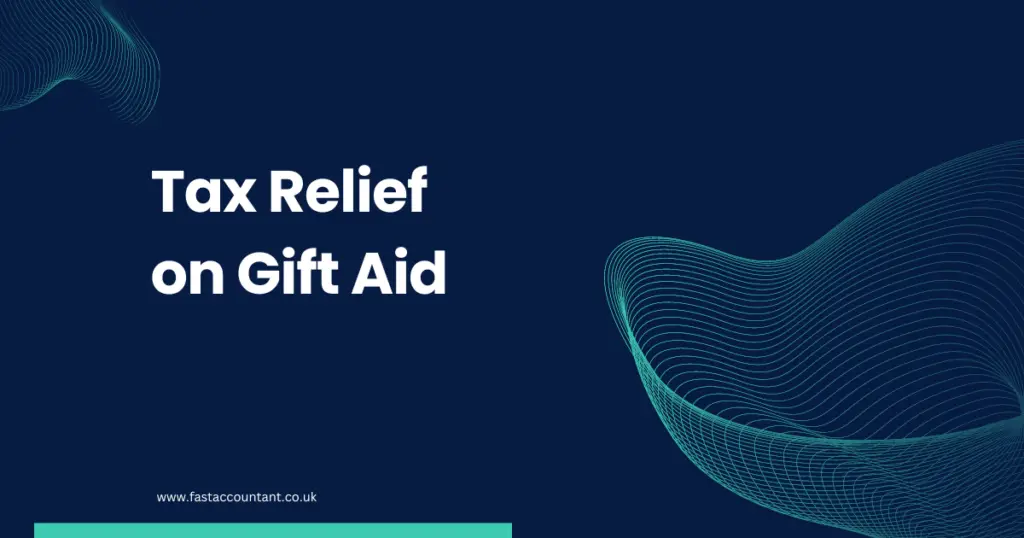
In this article, you will learn about tax relief on gift aid and how to maximize your donations through the Gift Aid scheme. By donating to a charity, you can not only support a good cause but also receive tax relief. Through the Gift Aid scheme, charities and community amateur sports clubs (CASCs) can claim an additional 25p for every £1 donated. To ensure that the charity can claim this extra amount, you must make a Gift Aid declaration. It is important to note that to qualify for tax relief on gift aid, donations should not exceed four times the amount of tax paid in a tax year.
Maximize your donations through the Gift Aid scheme
Donating to a charity can provide tax relief through the Gift Aid scheme. Not only does this benefit charities and community amateur sports clubs (CASCs), but it also allows donors to make a greater impact with their contributions. By understanding the rules and limitations of the scheme, you can maximize your donations and ensure that both you and the charity reap the rewards.
What is the Gift Aid scheme?
The Gift Aid scheme is a government initiative that allows charities and CASCs to claim an additional 25p for every £1 donated by UK taxpayers. This means that for every £1 you donate, the charity can receive £1.25 through Gift Aid. It is a simple and effective way to increase the value of your charitable donations.
The benefits of Tax Relief on Gift Aid scheme
The Gift Aid scheme provides several benefits, both for the charity and the donor. For charities and CASCs, it means an increase in the total amount of donations they receive. This additional income can be used to support their charitable activities, fund projects, and make a real difference in people’s lives.
For donors, the Gift Aid scheme offers tax relief. By making a Gift Aid declaration, you can ensure that your donation is treated as if you had already deducted basic rate tax from it and qualify for tax relief on gift aid. This means that if you are a basic rate taxpayer, the charity can claim the tax back on your donation, increasing its value by 25%.
How the Gift Aid scheme works
To benefit from the Gift Aid scheme, you must make a Gift Aid declaration when making a donation to a charity or CASC. This can usually be done online or by filling out a form provided by the charity. The declaration confirms that you are a UK taxpayer and gives permission for the charity to claim Gift Aid on your donation.
Once the declaration is made, the charity can claim the additional 25% from HM Revenue and Customs (HMRC). This money is paid directly to the charity and does not affect the donor’s tax liability. It is a simple and efficient way to increase the impact of your donations.
How can charities and CASCs maximize donations through the Gift Aid scheme?
Charities and CASCs can encourage donors to make the most of the Gift Aid scheme by providing clear information and guidance. Here are some ways they can help donors maximize their contributions:
Claiming an extra 25p for every £1 donated
By highlighting the benefits of Gift Aid to potential donors, charities and CASCs can encourage them to make a Gift Aid declaration. This simple act can result in a significant increase in the total amount of donations received by the organization.
Making a Gift Aid declaration
Charities should make it easy for donors to make a Gift Aid declaration by providing clear instructions and online forms. By simplifying the process, more donors will be willing to make a declaration and allow the charity to claim the additional 25%.
Donation limits under the Gift Aid scheme
It’s important to note that there are limits on the amount of donations that can be made through the Gift Aid scheme. Donations must not exceed 4 times the amount of tax paid in that tax year.
What is Payroll Giving?
Payroll Giving is another way to maximize your charitable donations. It allows you to donate to a charity directly from your salary, before Income Tax is deducted. This means that you receive immediate tax relief on your donation, without having to wait for the charity to claim Gift Aid.
Advantages of Payroll Giving for donors
Payroll Giving offers several advantages for donors. Firstly, it allows you to give regularly to your chosen charities with minimal effort. Once set up, your donations are deducted automatically from your salary, making it a convenient and hassle-free way to support your favourite causes.
Secondly, Payroll Giving provides immediate tax relief. As the donation is deducted before Income Tax is applied, you receive tax relief at your highest rate of tax. This means that higher-rate taxpayers can benefit even more from their donations.
How Payroll Giving works
To set up Payroll Giving, you need to complete a simple application form provided by your employer. You will need to specify the amount you want to donate and the charity you wish to support. Your employer will then deduct the donation from your salary each pay period and pass it on to the chosen charity.
Payroll Giving is a flexible scheme that allows you to change your donation amount or charity at any time. It is a convenient way to maximize your donations and support the causes you care about.
How can higher-rate taxpayers benefit from Tax Relief on Gift Aid scheme?
Higher-rate taxpayers can benefit from the Gift Aid scheme by claiming back the difference between the tax they have paid and what the charity has received. This means that not only do they receive the initial tax relief of 25%, but they can also claim additional tax relief through their self-assessment tax return.
Claiming back the difference in tax paid
To claim the additional tax relief, higher-rate taxpayers need to include their charitable donations on their self-assessment tax return. HMRC will then calculate the difference between the tax they have paid and what the charity has received, and adjust their tax liability accordingly. This can result in a significant reduction in their overall tax bill.
Calculating tax relief for higher-rate taxpayers
For higher-rate taxpayers, the amount of tax relief they can claim is equal to the difference between the higher-rate tax (40% for the current tax year) and the basic rate tax (20% for the current tax year) on the donation. This means that for every £1 donated, a higher-rate taxpayer can claim an additional 20p in tax relief.
For example, if a higher-rate taxpayer donates £100 to a charity through Gift Aid, the charity can claim the additional 25% (£25) directly from HMRC. The taxpayer can then claim back the difference between the higher-rate tax (40% of £100 = £40) and the basic rate tax (20% of £100 = £20), which is £20. In total, the donation is worth £145, with the taxpayer receiving £20 in tax relief.
When can tax relief be claimed for donations made through Gift Aid?
Tax relief for donations made through Gift Aid can be claimed in the current tax year. This means that donations made up until the Self Assessment tax return deadline can be included in the tax relief calculation. It’s important to keep track of your charitable donations throughout the year to ensure that you claim the maximum amount of tax relief.
Deadline for claiming tax relief on gift aid
The deadline for filing your Self Assessment tax return depends on how you choose to submit it. If you file online, the deadline is usually January 31st following the end of the tax year. If you file a paper return, the deadline is usually October 31st following the end of the tax year. It’s important to submit your tax return on time to avoid any penalties or late filing fees.
Eligibility for claiming tax relief
To be eligible for tax relief on donations made through Gift Aid, you must be a UK taxpayer and have paid enough Income Tax or Capital Gains Tax in the tax year to cover the amount of tax that the charity will reclaim. It’s important to keep records of your donations and any Gift Aid declarations you have made to support your claim.
How can donations made through Gift Aid impact the Married Couple’s Allowance?
Donations made through Gift Aid can have a positive impact on the Married Couple’s Allowance. The Married Couple’s Allowance is a tax allowance that is available to married or civil partnered couples. It can reduce your tax bill and increase the amount of money you have available to donate to charity.
Possible increase in Married Couple’s Allowance
By making donations through Gift Aid, you can potentially increase your total charitable donations for the tax year. This increase in donations can result in a higher tax reduction through the Married Couple’s Allowance. It’s important to consult with a tax advisor or refer to HMRC guidelines to understand how your donations can impact your Married Couple’s Allowance.
Conclusion
Maximizing your donations through the tax relief on gift aid scheme benefits both charities and donors. Charities receive additional income to support their charitable activities, while donors receive tax relief on their contributions. By understanding the rules and limitations of the scheme, you can ensure the maximum impact of your donations. Whether you choose to make a Gift Aid declaration or use Payroll Giving, these options provide a convenient and efficient way to support the causes you care about. Make the most of the tax relief on gift aid scheme and make a difference in your community today.

